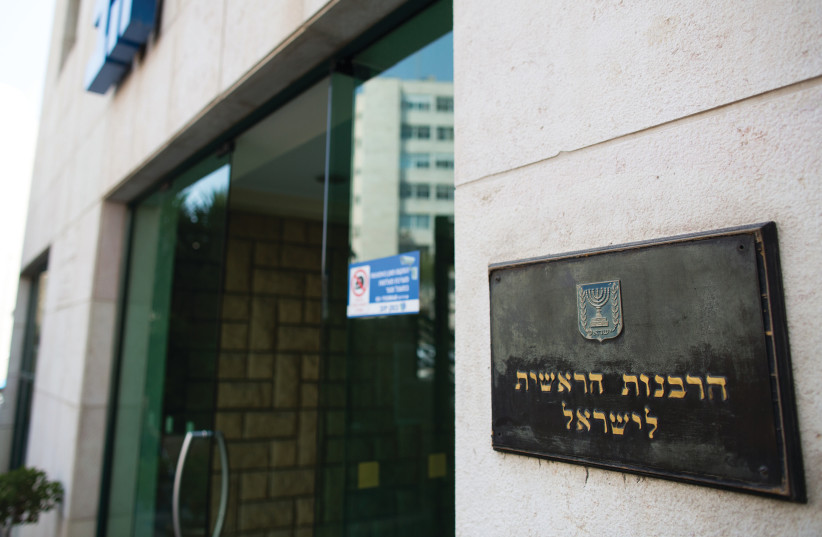Ahead of Shavuot, the Jewish holiday that highlights conversion, a study released Monday shows that more than 500,000 Israeli citizens defined as “irreligious” Jews find that the conversion system in Israel prevents them from converting.
During Shavuot, the Book of Ruth is read in synagogues about Ruth, the most famous and significant convert to Judaism.
According to the annual conversion report by the nonprofit advocacy organization ITIM and the Menomadin Center for Jewish and Democratic Law, the number of people applying for conversion in the last decade has been low, but even among those who did apply and attended the conversion preparation courses, fewer than half were able to complete the conversion process successfully.
If they actually are accepted for conversion by the Chief Rabbinate, receipt of the conversion certificate, which culminates the process, may be delayed for many months, the report said.
Why is conversion to Judaism in Israel so difficult?
ITIM and the Menomadin Center for Jewish and Democratic Law at Bar-Ilan University, which published their first planned annual report on the conversion system, cited a series of failures in the implementation of the process.
Even though conversion is one of the most contentious issues in Israeli Jewish society, “the conversion system continues to make it difficult for converts and thus distances those considered as Zera Israel [seed of Israel, those who are not halachicly Jewish, having no Jewish mother, but who have Jewish ancestry, such as a Jewish father] from the people of Israel,” the report said.
According to the study, which examined the conversion system data, it appears that it failed in its main purpose, “to make conversion accessible to those interested in it.”
“Instead of recognizing the huge national challenge of half a million citizens who feel Jewish and live as Jews, but are not [Jewish] according to Halacha, the Chief Rabbinate adopts rigid and strict halachic approaches, which distance it from potential converts,” the report said.
“Instead of adopting acceptable halachic approaches, which acknowledge them as Zera Israel [and therefore of a different status than gentiles], the rabbinate’s conduct results in fewer than 4,000 people applying each year to the conversion system and fewer than 2,000 successfully completing the procedure,” it said.
According to data provided by government ministries, 3,904 cases were opened in 2022, representing an increase of about 45% over the past nine years and an increase of more than 60%, compared with 2019.
Apparently, an increase in the number of cases is indicative of an increase in the demand to convert. When this increase is compared with the increase in the number of nonreligious people in Israel during these years, however, a different picture emerges. The number of cases opened increased significantly in 2022, but they represent only 0.75% of those who are listed by the Interior Ministry as citizens with no religion.
“closing the gates to joining the Jewish people first and foremost harms the people who live here and define themselves as Jews, but cannot truly live a Jewish life.”
Shaul Farber
ITIM founder Rabbi Dr. Shaul Farber said: “Closing the gates to joining the Jewish people first and foremost harms the people who live here and define themselves as Jews, but cannot truly live a Jewish life.”
Unfortunately, “the public is not aware of the extent of the phenomenon and the manner of conduct around the conversion system,” he said, adding that “the [conversion] system delayed issuing conversion certificates even long after the completion of the process as part of a conflict with government ministries. For two decades, the conversion system has not been successful in its mission.”
“It is time for the state to adopt independent Orthodox courts and accept their conversions as full halachic conversions, thus bringing people closer to Judaism instead of alienating them,” Farber said. “We do not want to wake up after it’s too late.”
Attorney Elad Kaplan, director of the Menomadin Center for Jewish and Democratic Law at Bar-Ilan University, said the study’s data show that while thousands of people go through the state conversion system each year, and many complete the conversion, there is still a large gap between the number of applicants and the number of actual converts.
“The data requires us to look at the glass half full without ignoring the glass half empty,” he said. “Many of those who study for conversion and even open a conversion file do not complete the process. To reduce the large number of dropouts, the rabbinate is required to conduct a home inspection.
“A strict halachic policy, along with delays in signing the conversion certificates of converts, created a chilling effect, both for the desire to start a conversion process and for the ability to complete it successfully. To reverse the trend, it is necessary to renew the commitment of the State of Israel toward the converts to create attentive and accessible conversion gates,” Kaplan said.

